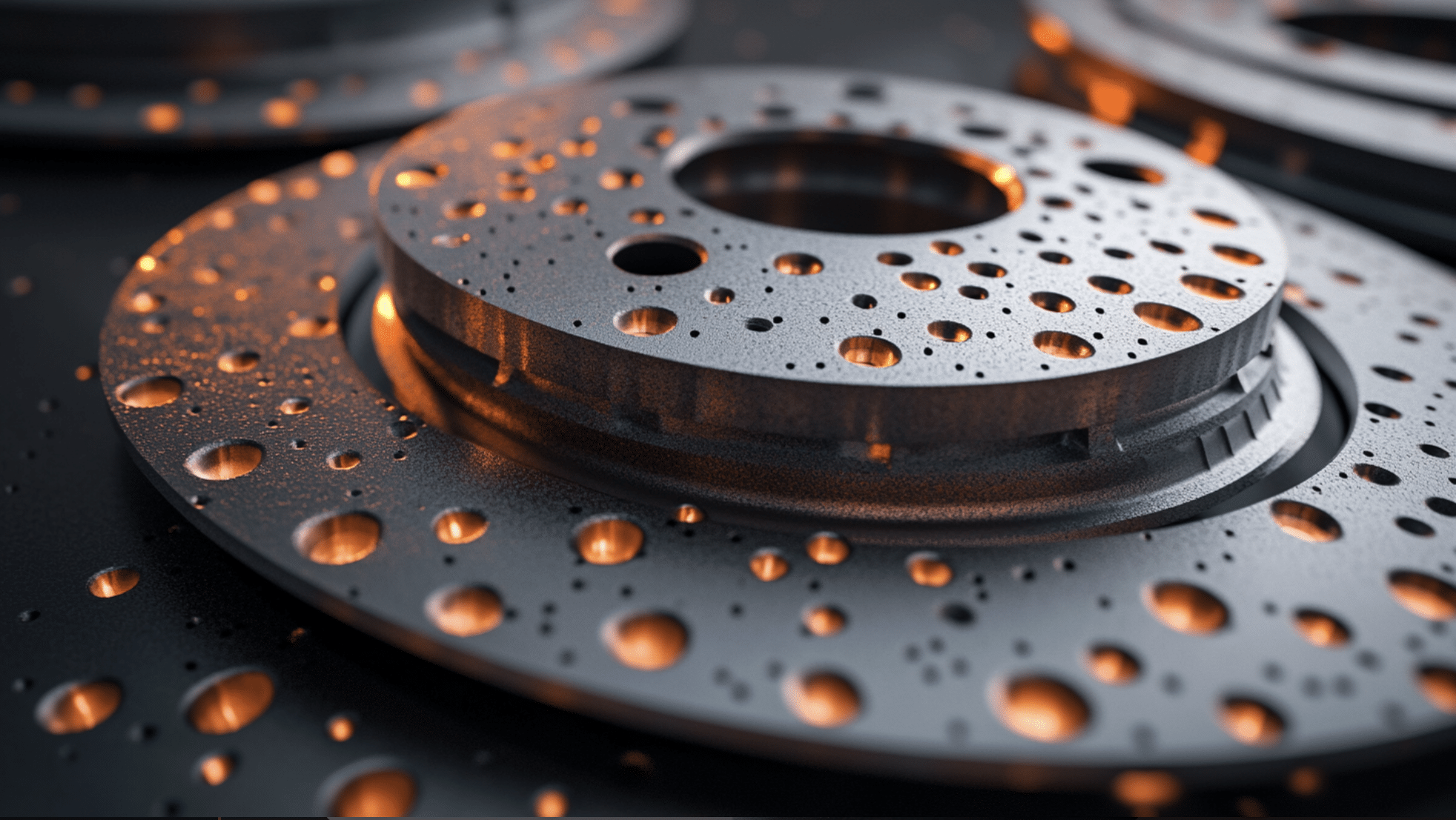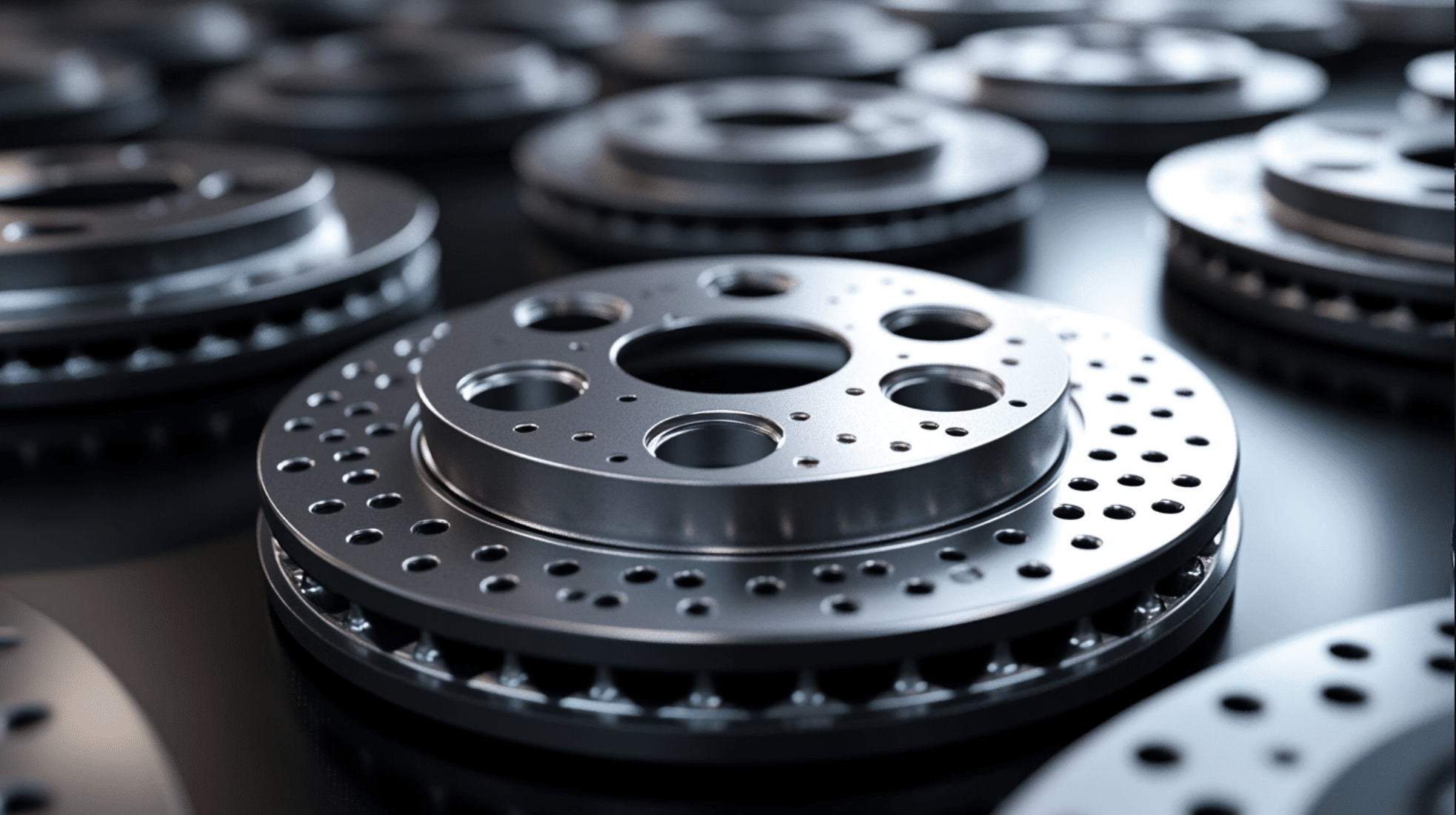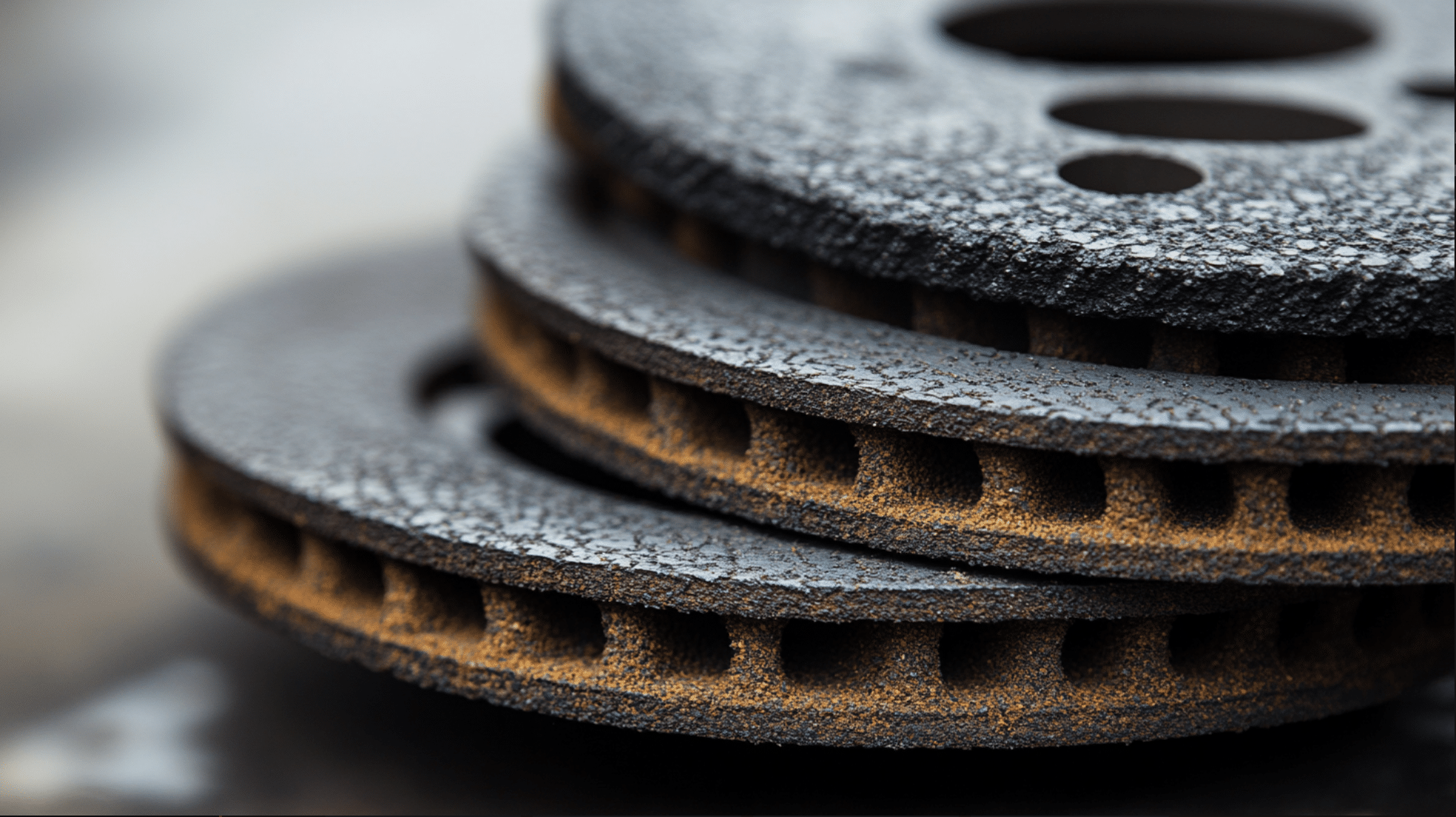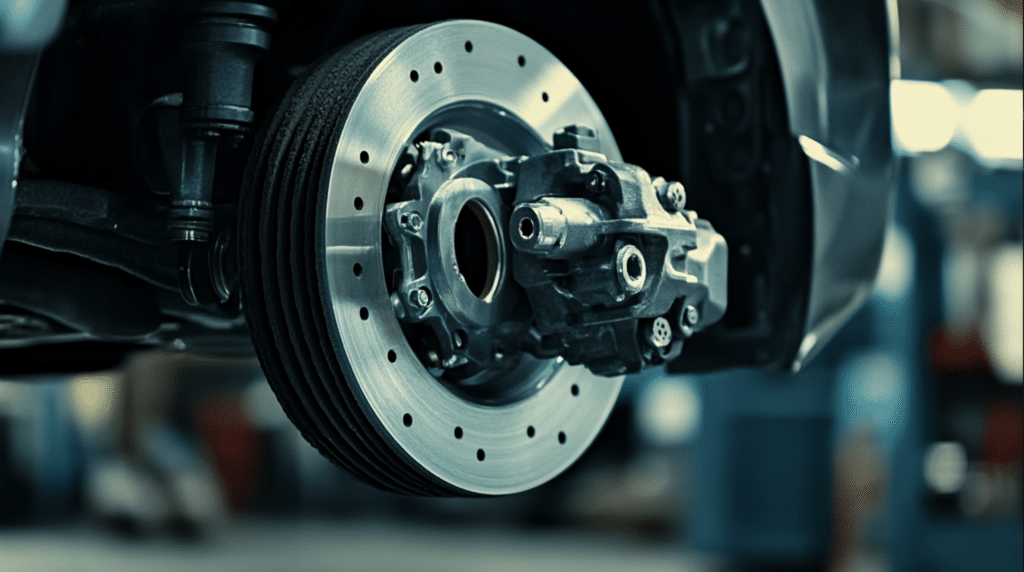Many drivers overlook the importance of brake pads until they hear that telltale squeal.
Choosing the right type and knowing how many you need can be confusing, yet it’s crucial for your safety on the road.
This guide will clarify the different types of brake pads and their quantity requirements, helping you make informed decisions about your vehicle’s braking system.
We’ll explore four main types of brake pads – semi-metallic, ceramic, low-metallic NAO, and non-asbestos organic – and discuss their pros and cons.
You’ll also learn about the number of brake pads typically needed per wheel, which varies depending on your car’s make and model.
By the end, you’ll clearly understand brake pad basics, empowering you to maintain your vehicle’s stopping power effectively.
What Are Brake Pads?
Brake pads are essential components in your vehicle’s braking system, designed to apply pressure and friction to brake rotors, allowing your car to stop.
They consist of two main parts:
- A steel backing plate: Provides structural strength.
- A friction material: Bound to the plate, responsible for creating the friction needed to stop the vehicle.
When you press the brake pedal, the pads push against the brake rotors—those big, flat discs often visible behind your car’s wheels.
This action converts the kinetic energy of your moving vehicle into thermal energy through friction, causing your car to slow down or stop completely.
Brake pads are vital for your safety and your vehicle’s overall functionality.
Without properly functioning brake pads, your car couldn’t stop quickly or safely.
Moreover, good brake pads protect other parts of the braking system from wear and tear, preventing costly damage.
Regular checks and timely replacement of brake pads are key to:
- Keeping your car safe to drive.
- Ensuring your car stops when you need it to.
- Avoiding more expensive repairs down the road.
Types of Brake Pads
There are four main types of brake pads—Semi-Metallic, Ceramic, Low-Metallic NAO, and Non-Asbestos Organic (NAO).
Each type offers unique benefits and drawbacks.
The right choice depends on your vehicle’s needs and driving conditions.
1. Semi-Metallic Brake Pads

These pads contain 30% to 65% metal, including steel, copper, and other metallic elements, bonded together with organic resin.
Advantages
- Durability: Highly durable, suitable for heavy braking and long-term use.
- Heat Resistance: Excellent heat dissipation, preventing brake fade during demanding activities.
- Affordability: Generally more cost-effective than ceramic options, making them a good choice for performance vehicles.
Drawbacks
- Cold Weather Performance: Less effective in extremely cold conditions, potentially affecting braking performance.
Ideal Use
- Best suited for high-performance vehicles and cars that need strong braking power over extended periods.
2. Ceramic Brake Pads

Made from ceramic fibers and other non-metallic materials, known for clean and quiet operation.
Advantages
- Clean Operation: Produces less dust, keeping wheels cleaner.
- Quietness: Operates more quietly, reducing braking noise.
- Longevity: Lasts longer than other types, offering long-term value.
- Heat Absorption: Excellent at absorbing heat, ideal for high-performance braking.
Drawbacks
- Cost: More expensive than other types, often used in high-end vehicles.
- Performance in Cold: Slow to reach optimal operating temperature, potentially affecting performance on short trips.
Ideal Use
- Perfect for high-performance vehicles, especially in warmer conditions.
3. Low-Metallic NAO Brake Pads

Combines organic materials with 10% to 30% metal, typically copper or steel, to boost braking performance.
Advantages
- Heat Transfer: Superior heat transfer capabilities, enhancing overall braking performance.
- Improved Stopping Power: Provides better stopping power than non-metallic pads, suitable for heavier vehicles.
Drawbacks
- Noise: Tends to be noisier compared to other brake pads.
- Dust Production: Higher metal content results in more dust accumulation on wheels.
Ideal Use
- Well-suited for medium-sized vehicles requiring better stopping power and able to tolerate some extra noise and dust.
4. Non-Asbestos Organic (NAO) Brake Pads

They are made from organic materials such as fiberglass, rubber, and Kevlar. These pads are softer and gentler on brake discs.
Advantages
- Softness: Easier on brake rotors, reducing wear on the discs.
- Quietness: Generally quieter during operation, good for everyday driving.
- Environmentally Friendly: Free from asbestos, safer for health and the environment.
Drawbacks
- Wear Rate: Wears out more quickly than other types, requiring more frequent replacements.
- Limited Performance: Not suitable for frequent or heavy braking, can overheat and lose effectiveness.
Ideal Use
- Best for day-to-day driving in compact vehicles with moderate braking demands and where noise reduction is important.
How Many Brake Pads Does Your Vehicle Need?
The number of brake pads your vehicle needs depends on its braking system and the type of vehicle you drive.
Most vehicles have 8 brake pads, 4 for the front brakes and 4 for the rear, but this can vary significantly.
1. Standard Vehicles
Most passenger vehicles have disc brakes on all four wheels.
The brake pad configuration includes 4 brake pads for the front brakes (2 per wheel) and 4 brake pads for the rear brakes (2 per wheel), for a total of 8 brake pads.
This configuration ensures balanced braking, allowing the vehicle to stop effectively.
It provides even pressure distribution and wear across all wheels, enhancing safety and performance.
2. Advanced Vehicles
These often have more advanced braking systems with multiple pistons per caliper. More pistons mean more pads.
For example, a car with 6-piston front and 4-piston rear calipers might require 12 brake pads for the front brakes (6 per side) and eight brake pads for the rear brakes (4 per side).
Some high-performance vehicles also have electronic parking brakes, which can add four more pads. Thus, such a vehicle could have up to 24 brake pads in total.
This setup is necessary for enhanced braking performance, especially in high-speed conditions where precise control is crucial.
It allows for better heat dissipation and more consistent braking power.
3. Special Cases
Trucks and load-carrying vehicles often require pads with higher metal content or even severe-duty pads to handle increased stress.
Larger vehicles may have additional axles, each needing its own set of pads.
The total could range from 8 to 16 brake pads or more, depending on the number of axles.
The increased weight and load these vehicles carry demand stronger, more durable braking systems to ensure safety.
The additional pads help distribute the braking force more evenly, reducing wear and improving stopping power.
Choosing the Right Brake Pads for Your Vehicle
Selecting the right brake pads is crucial for your vehicle’s performance and safety.
Here’s how to make an informed decision:
- It’s vital to consult with a mechanic or conduct thorough research to find the best brake pads for your vehicle.
- Each car model has specific requirements, and using the wrong type can affect braking performance and safety.
- A professional mechanic can provide insights based on your vehicle’s make, model, and your driving habits.
- They can also advise on special considerations for your area’s climate or terrain.
- Online resources, including car forums and manufacturer websites, can offer valuable information.
- However, always verify the credibility of your sources.
While individual needs may vary, here are some general guidelines for different vehicle types:
For Compact Cars
- Non-asbestos organic pads are often a good choice.
- They provide minimal noise and sufficient stopping power for lighter vehicles.
- These pads are gentle on rotors and work well for everyday driving conditions.
Best For: City driving, lightweight cars, and minimal maintenance.
For Medium Cars
- Low-metallic NAO pads can be a good fit.
- They offer improved stopping power compared to organic pads but are slightly noisier than organic pads.
- However, it is suitable for slightly heavier vehicles. They balance performance and cost-effectiveness well.
Best For: Commuter vehicles, family sedans, and occasional highway driving.
For Sports Cars
- Semi-metallic or ceramic pads are typically recommended for high-performance needs.
- Semi-metallic pads offer excellent heat dissipation for intense driving, while ceramic pads provide strong, quiet braking with less dust.
Best For: Sports cars, high-performance vehicles, and frequent hard braking.
For Heavy-Duty Vehicles
- Severe-duty pads with higher metal content are often necessary.
- These pads can handle larger vehicles’ increased weight and braking demands, providing reliable stopping power under heavy loads.
Best For: Trucks, SUVs, vehicles carrying heavy loads, and those used in demanding conditions.
Conclusion
Understanding brake pads is crucial for every driver.
We’ve explored the different types – from semi-metallic to ceramic – each with its strengths.
Remember, the right choice depends on your vehicle and driving style.
Organic or low-metallic NAO pads often suffice for everyday drivers, while performance enthusiasts might prefer semi-metallic or ceramic options.
Don’t skimp on quality regarding brake pads – your safety is at stake.
Regular inspections and timely replacements are key to maintaining your vehicle’s stopping power.
If you’re unsure, consult a professional mechanic. They can provide tailored advice based on your specific needs.
Ready to upgrade your brake pads? Take action now.
Schedule a brake inspection or research options suitable for your vehicle. Your safer, more efficient braking experience starts here.


